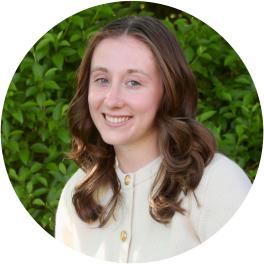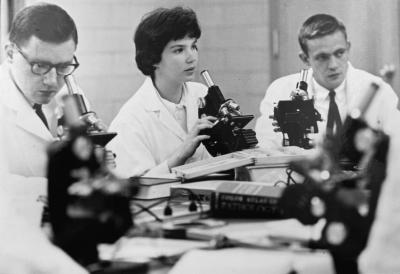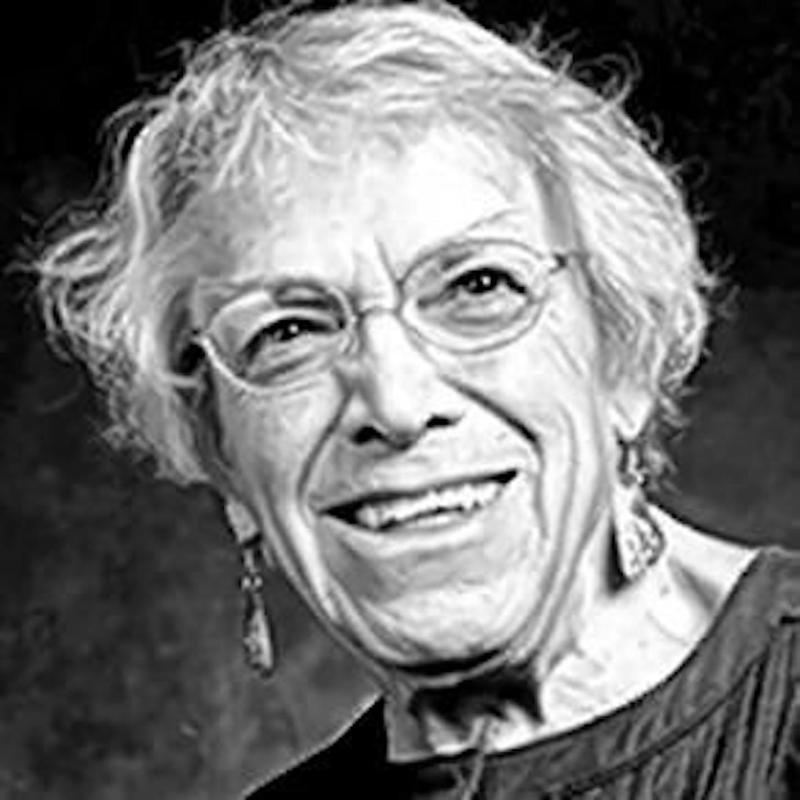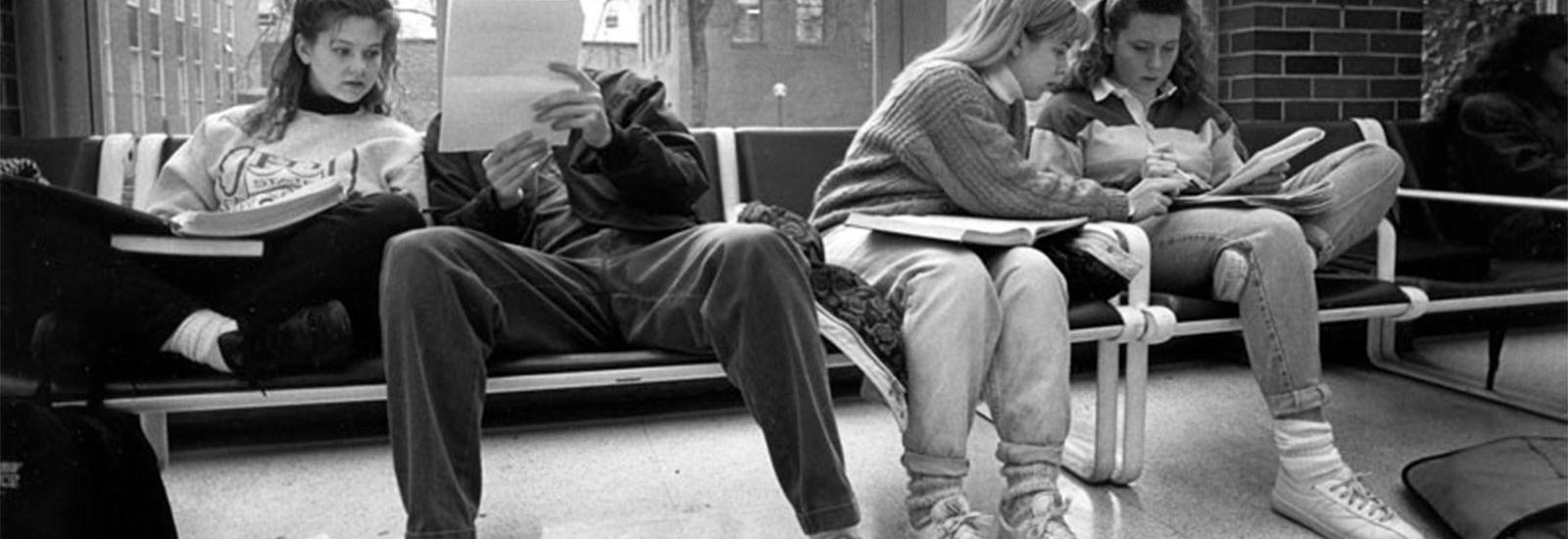
About the Author
MEREDITH CLAY (SHE/HER)
Clay is an undergraduate research apprentice in the Global Arts + Humanities’ 2024-25 Society of Fellows cohort. She is a third-year student majoring in history with minors in French and history of art. She is also a recipient of the Hoffman Leaders and History Fellowship which has allowed her to pursue research on women pursuing advanced degrees following Title IX. Her work, which was awarded the History Department’s Early Career Success Award, examines resources for women at Midwestern public institutions. Clay serves as Vice President of Alumni Outreach for Student-Alumni Council, acting as the primary liaison between students and alumni while overseeing numerous alumni and student events. Looking ahead, she plans to attend law school, where she aims to combine her research expertise and passion for advocacy to later pursue civil service.
Project Overview
Though Title IX marked a huge turning point for gender equity in higher education, true progress required more than just legislation. This project explores the key women at The Ohio State University, the University of Minnesota and West Virginia University who championed institutions, policies and networks that pushed beyond legal requirements to create lasting change. Through oral histories, archival research and statistical analysis, this study highlights the individuals that fought to support women in these male-dominated institutions, helping mitigate sexual harassment and establish mentorship programs that could empower future generations. By examining their stories, we gain a deeper understanding of the systematic barriers left unaddressed by Title IX and the women who refused to let them remain.
At West Virginia University, women like Melanie Cook led the Council for Women’s concerns, championing initiatives like the Women’s Studies Program and responding to ongoing gender discrimination and sexual harassment. At the University of Minnesota, Anne Truax spearheaded institutional change as the head of the Women’s Center, establishing the Women’s Studies Department and working to mitigate sexual harassment cases across campus. Turning towards our home institution, The Ohio State University witnessed change driven by a collective force of women. In 1986, twenty-two women launched Critical Difference for Women after uncovering alarmingly low retention rates for women in graduate and professional programs. Despite Title IX protections, systemic barriers still discouraged women from completing advanced degrees. Through their collaboration, they built an institutional framework that provided mentorship, financial support and advocacy to empower women in higher education, ultimately resulting in women like Gay Hadley to establish Women’s Place, a supportive community that continues to offer childcare and reentry scholarships to women all across Ohio.
Statistics

Pre-Title IX: From 1887 through 1972, 0.00342% West Virginia University engineering graduates were women.
Post Title IX: In the years 1980-1981 at Ohio State, married students enrolled in professional colleges were 78% men.
Bridging gender gaps within collegiate athletics and degree acceptances, Title IX had significant impacts on the number of women pursuing higher education and athletics. Nevertheless, the collegiate atmosphere was crafted by and for men, leaving substantial inequities even following this protective legislation. There existed structural and inherent challenges facing women that remained even following Title IX protections. Whether it be societal discontent with women in specific fields, the shaming of mothers in arduous occupations, or the financial burden of extended upper-level academia, women had to hurdle more barriers in becoming successful students and professors.
“We need to get people to understand the importance of women.”
Lou Briggs, volunteer chairman for the Critical Difference Program
Activist Profiles

Gay Hadley | The Ohio State University
A true trailblazer for women at Ohio State seeking to return to college. Following the establishment of the Critical Difference Scholarship, fiscal support was direly needed. As the associate director of reentry scholarships, Hadley worked tirelessly to get a meeting with a visiting Coca-Cola donor representative. Propelling the voices of former recipients of the meager scholarship, Hadley soon had the donor representative in tears over the power of funding these extraordinary women. With her work, Hadley secured a $500,000 donation to the Critical Difference Program to help support reentry applicant scholarships and propel women-centered research grants. In doing so, Hadley made sure that this program was not a pipe-dream but a long-lasting reality. Later, Hadley would go on to become the first director of the Women’s Place, which carries on the beliefs and ideologies of the Critical Difference Program. In current day, the Women’s Place includes the Critical Difference Program as well programs to uplift and support women of color and provide mentorship programs to current female Ohio State students.

Anne Truax | University of Minnesota
Anne Truax was a pioneer at the University of Minnesota. As a young adult, Truax simultaneously pursued a PhD in Anthropology, becoming a Bush Leadership Fellow, all while she worked as director of the Minnesota Women's Center and acting as a member of the National Committee on the status of women in the professions. She was a known feminist on the Twin City campus, consistently advocating for equal pay amongst upper-level faculty members and working to diminish the prevalence of sexual harassment and assault at the University. As the director of the Women’s Center, Truax worked to support women who’s education may have been disrupted by marriage, childbirth, or general societal pressures. While the Women’s Center was originally focused on expanding education to women who may have left school and supporting those currently enrolled, it later evolved, under the leadership of Truax, to be a voice for the rights of women all across Minnesota’s campus.
Melanie Cook | West Virginia University
Throughout her tenure as the Chair for the Council for Women’s Concerns at West Virginia University & Assistant to the Director for Residence Life, Melanie Cook was consistently focused on uplifting undergraduate women and creating professional mentor figures for college women. The Council for Women’s Concerns pioneered the creation of West Virginia’s Assistant to the President for Social Justice, a position solely concerned with the advancement of gender and racial equity. As the chair for the Council for Women’s Concerns, Cook acknowledged and addressed concerns about day-care, affirmative action, sexual harassment in a classroom, and gender-based discrimination courses by professors and peers alike. In her roles, Cook encouraged women at WVU to enter male-dominated fields and seek out female role models.
Research Citations
- 1980-81 Annual Statistical Summary. Columbus, OH: The Ohio State University Office of Registration Services, 1981.
- 1995-96 Annual Statistical Summary. Columbus, Ohio: The Ohio State University Office of Registration Services, 1996.
- Ballum, Deborah. Oral Interview of Deborah Ballum. Other. Ohio State University Archives, October 4, 2013.
- Bonenberger, Lynne. “Making the Critical Difference.” Ohio State University Alumni Magazine, 1990.
- Chasser, Anne. Oral History with Anne Chasser. Other. Ohio State University Archives, December 4, 2014.
- Ducker, Brittany. “Overcoming the Hurdles: Title IX and Equal Educational Attainment for Pregnant and Parenting Students.” Journal of Law and Education 36, no. 3 (July 2007): 445–52.
- Duquaine-Watson, Jillian. Mothering by Degrees. Rutgers University Press, 2017.
- Ewoldt, John. “Obituary: Life of Anne Truax Paralleled Women’s Movement.” Star Tribune, January 29, 2013.
- Flood, Maureen. “New Award to Benefit Women.” The Lantern. October 15, 1993.
- Hadley, Gay, and Susan Hartmann. Gay Hadley Oral History Interview. Other. Ohio State University Archives, August 15, 2015.
- Haney, Samantha G. “Women's Needs Target of Private Fund-Raiser Plan .” The Lantern. June 5, 1991.
- Hendricks, Peg, Sally Kitch, Kelly Traubert, and Dave Ferguson. “Ohio State University News,” May 1994.
- Hendricks, Peg. Letter to Development Collegues . Critical Difference: "New and Improved" . Columbus, OH: Ohio State University Archives, June 7, 1993.
- Hendricks, Peg. “Ohio State University News.” The Coca-Cola Foundation Helps Make a 'Critical Difference for Women'. May 21, 1994.
- Hendricks, Peg. “The Ohio State University News,” May 21, 1994.
- Hensel, Nancy. “Maternity, Promotion, and Tenure: Are They Compatible?” Edited by Lynne B Welch. Women in Higher Education: Changes and Challenges, 1990, 3–11.
- Legacy.com, and Legacy. “Gay Hadley Obituary (1930 - 2020) - Columbus, OH - the Columbus Dispatch.” Legacy.com, May 21, 2020.
- Opitz, Donald. “Three Generations in the Life of the Minnesota Women’s Center.” Minneapolis: The University of Minnesota, 1999.
- The Ohio State University. “Critical Difference Program.” Ohio State University News, 1993.
- Panek, Judy. “Scholarship Admits Past Students.” The Lantern. May 8, 1992.
- Panofsky, Ruth. “Professor/Mother: The Uneasy Partnership.” Femspec 8 (January 2, 2007): 65–74.
- Peavy, Marquetta. Marquetta Peavy Oral History Interview. Other. Ohio State University Archives, July 11, 2013.
- Riley, Catherine L., Alexis Hutchinson, and Carley Dix. Title IX and the Protection of Pregnant and Parenting College Students: Realities and Challenges. New York, NY: Routledge, 2022.
- West Virginia University Women’s Studies. Dreams and Realities: WVU and a Future for Women. Morgantown, WV: West Virginia University, 1988.
- Stebbins, Julie. “OSU Receives $500,000 Award to Benefit Program for Women.” The Lantern. May 23, 1994.

